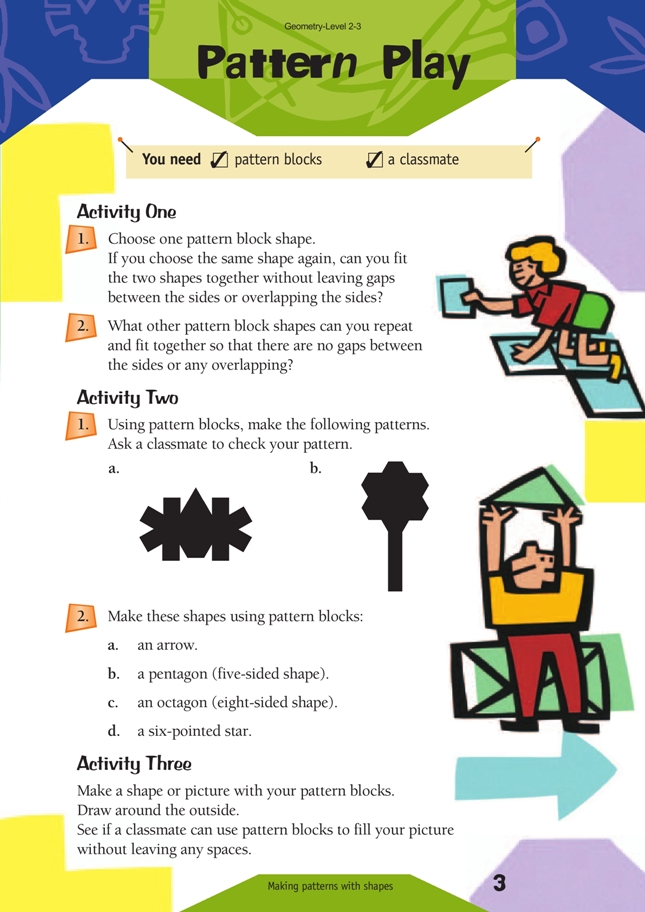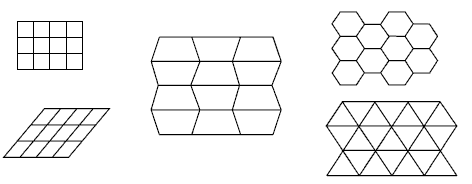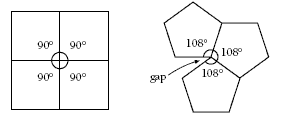This is a Level 2 Geometry activity from the Figure It Out Series.
A PDF of the student activity is included.
Click on the image to enlarge it. Click again to close. Download PDF (171 KB)
make shapes and patterns using two dimensional shapes.
FIO, Level 2-3, Geometry, Pattern Play, page 3
A classmate
Activity One
In this activity, students apply the properties of polygons to find tessellation patterns. Pattern blocks provide a large number of possibilities for tessellation. These possibilities include:
The key idea of tessellation is the size (or measurement) of the internal angles of the polygons that meet at each vertex (point). For example, consider squares and regular pentagons:
Although squares will tessellate about a point because four angles of 90°
complete a full 360°, regular pentagons have internal angles of 108°. Three regular pentagons about a point give an angle sum of 324°, which leaves a gap.
Students at this level may intuitively grasp this idea, but full understanding of tessellations is usually developed in later years. Encourage students to explain why some shapes tessellate but others do not.
Activity Two
Students will need to visualise what pattern block shapes will fit into the given silhouettes. If students look at the parts of the figure that jut out, they get the best clues about which shapes are involved in that figure.
Activity Three
This activity encourages students to investigate possible shapes that they can make with pattern blocks. Angles are very useful indicators of which blocks have been used. For example, the angles of the octagon suggest that several triangles, rhombuses, or trapezia have been used:
Answers to Activities
Activity One
1. and 2. Students will not be able to fit together
the repeated shape of a circle or a hexagon
without gaps, but they should be able to repeat
equal-sided shapes, such as squares, triangles,
and rectangles.
Activity Two
1. a. and b. Classmate to check
2. a.– d. Teacher to check
Activity Three
Answers will vary.



